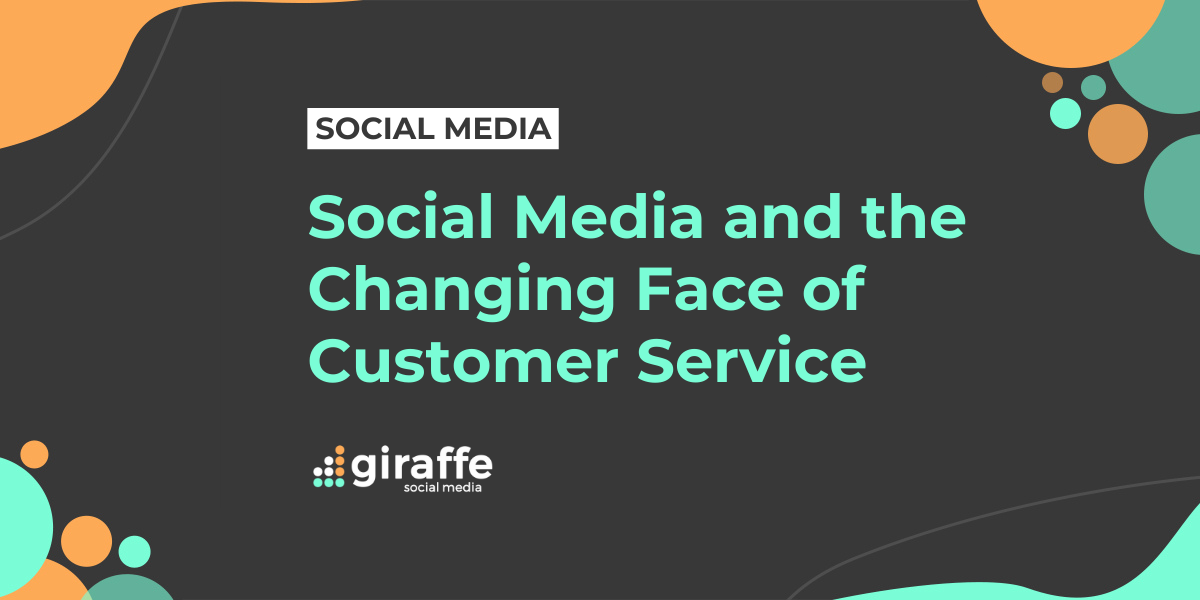Over the past few years, social media has single-handedly turned the customer service experience on its head. The digital world has completely changed expectations surrounding rates of engagement by brands and businesses, and to succeed they need to recognise and accommodate the changing needs of their customers.
Due to the rise of social media in recent years, customers have rapidly crossed over from passive to actively engaged consumers. Social networking is now a one-stop-shop that allows users to discover and engage with new brands, products and businesses. A brand’s page is the first place that a consumer will go to whenever they have something to say about a product or service, be it positive or negative.
The accessibility of brands on social media can only be seen as a positive for users and brands alike, but that doesn’t mean it doesn’t present some challenges. Keeping up with social monitoring/listening alongside other social media duties is no easy task, especially when receiving questions or complaints from customers that need to be dealt with as soon as possible.
How to effectively utilise social media as a customer service tool
If your business is going to use social media as a customer service tool, you need to have strategies and policies in place to effectively utilise the tool. There are several ways to go about this, and your plan should be tailored to your business and customer needs.
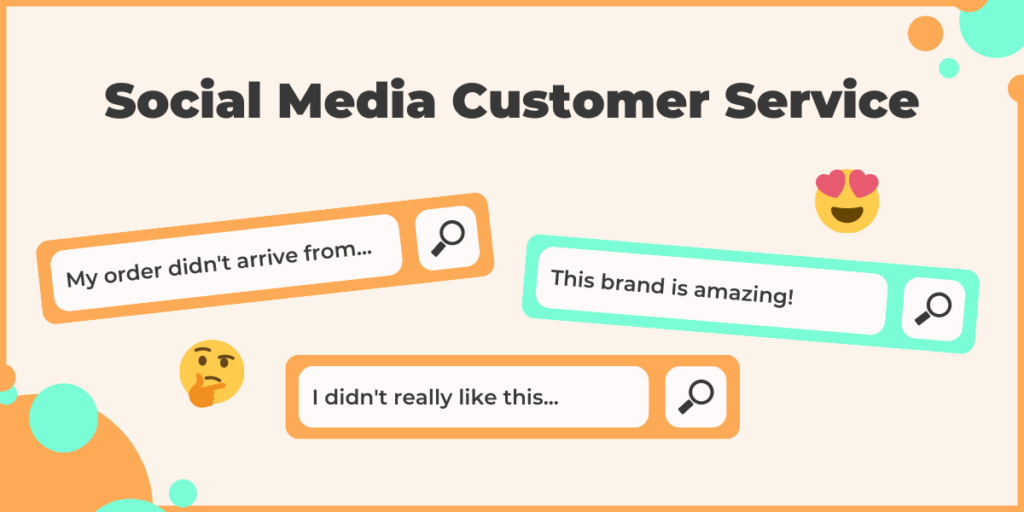
Hootsuite recommends the following tips to get started with effective social media customer service:
- Set up a dedicated handle for social media customer support,
- Find and monitor conversations relevant to your business,
- Create social media guidelines,
- Be proactive,
- Expand your idea of what customer service can be,
- Manage customer expectations,
- Always respond,
- Respond quickly—with templates for common questions,
- Try a chatbot for common service requests,
- Use the right channels—most likely Facebook and Twitter,
- Take public conversations private.
Have Open and Honest Dialogues
By nature, social media is a completely open and accessible platform. Despite private messaging function on almost all social media platforms, most customers tend to favour posting openly so that their, and indeed the business’s, network can see what they have to say. For businesses, this means that any testimonies can be seen and analysed by both current and potential new customers.
Although social media sites have become prominent digital marketing and advertising avenues for businesses, they are also incredibly important for customer service. The reality is that as social media usage grows, so too does user demand for customer care via these channels. To meet this new demand, brands need to be active in providing adequate, honest responses to their customer’s concerns.
Be Available and Accessible
Businesses need to identify and analyse where their customers are most active online; they then need to be as accessible as possible on those networks and efficiently respond to queries. Negative reviews and complaints that are left unanswered can seriously damage a credible brand’s reputation among their network, and harm customer loyalty. Businesses are becoming aware that social media, as a platform that facilitates campaigning, can take one user’s issue and uncover similar instances from others. In that sense, complaints on social media can escalate at an astonishing rate.

Invest in Social Media for Customer Service
The future of customer service is on social media; 70% of people expect to message businesses in the future for customer service questions, and 64% would rather message a business than call them. Due to this demand, businesses must adapt and find ways to embrace social media as a customer service tool.
For bigger companies, it can be quite a challenge sifting through a high rate of queries across social media channels and prioritising those that require immediate responses, although social listening tools can make this easier. As a general rule, negative mentions need to be prioritised and dealt with in a timely matter. Doing so not only helps a business but can also have a positive impact on how a brand is viewed by its network. Brands need to be human and provide value on social media, and those that openly show that they care for their customers are often the most successful.
Social Customer Service Case Studies
Social media can be used as a customer service tool across almost all industries. Below, we’ll look into specific examples from across multiple industries and how big brands such as Domino’s and Amazon use social media for customer service.
The Food Industry
In the food industry, customers will take to social media to complain about their meal (including eating in, takeaway, or collection services) at fast food establishments and restaurants. All big fast-food brands have some sort of social media presence, whether they’re on just one channel or all of them.
Many of these big chains have also come under fire online at one time or another for various reasons, usually pertaining to the environment or meat products, flopped marketing campaigns, or other controversial slip-ups. Still, the fast-food industry reigns on, with social media at its disposal for efficient customer service.
Domino’s
Domino’s have a strong presence on social media, especially Twitter, Instagram, and Facebook where they have several localised pages to target customers in specific areas. These localised profiles also include non-English languages, maximising the reach and customer service use cases of the pages.
Domino’s brand tone of voice is generally warm, friendly, and humorous. The humorous aspect tends to be dropped from responses to negative customer queries, giving way to a more helpful and concise tone of voice to deal with the customer’s problem.
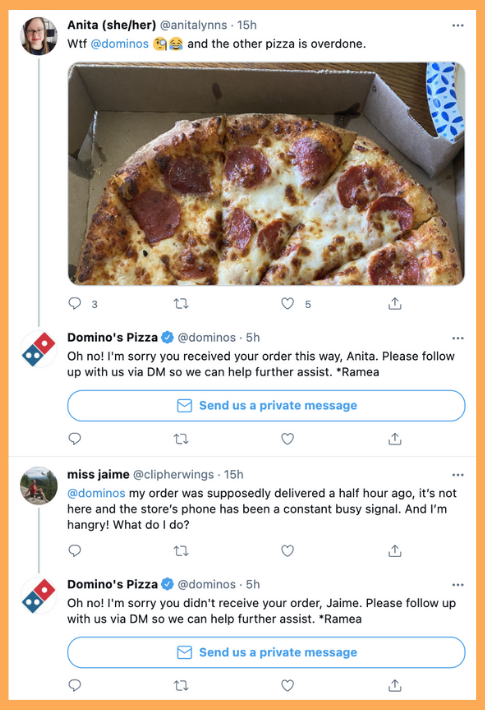
McDonald’s
McDonald’s social media following includes 80m followers on Facebook and almost 4m on both Twitter and Instagram, not including regional page variants. They typically utilise Twitter the most for customer service, responding swiftly and with kindness to customer issues.
Almost every McDonald’s post on social media receives some amount of backlash (whether related to the post itself or the company as a whole), typically from environmentalists, vegans, and animal rights activists. On social media, McDonald’s chooses to respond to actual customer queries and issues rather than engaging in political/activist conversations, especially ones which could cause irreparable damage to their brand reputation.
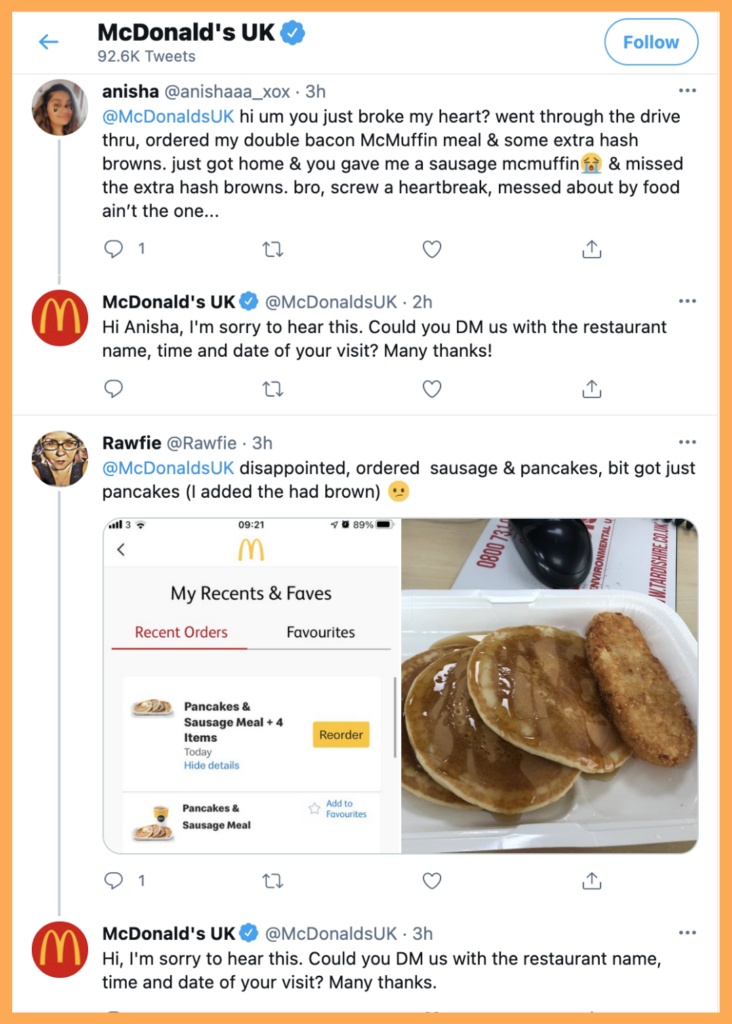
The Retail Industry
With so many retail businesses moving online, it’s no wonder that eCommerce companies are popular on social media. From fashion to technology and gadgets to multi-purpose retail stores, there is an abundance of retail companies using social media to help their customer service efforts. Even brick-and-mortar stores can leverage social media in a localised way to draw footfall to the stores and answer local customer queries, especially with the location tagging features available across social media platforms today.
Amazon
A global company as huge as Amazon is destined to have a very large social media following. With almost 100 million likes/followers across all of their active social media platforms, including sub-pages for branches and owned brands/projects, Amazon is no doubt a giant on social media.
Amazon always make an effort to respond directly to customer service questions and customer problems on social media, through dedicated support channels. On Twitter, the account @AmazonHelp answers customer service questions from Amazon customers around the world. Although the majority of tweets from this account are in English, the account offers help in English, German, Spanish, Portuguese, French, Italian, Japanese, Turkish, Dutch, Polish, Czech, and Swedish.
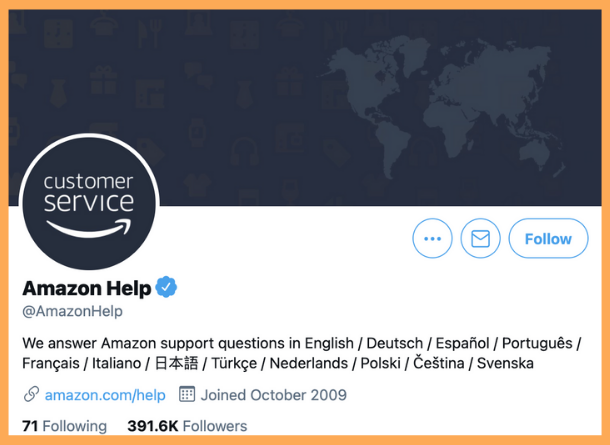
The Entertainment Industry
Social media as a customer service tool is also key for entertainment brands and services. Much of our entertainment in the digital age is based online and requires an internet connection, something that can so often cause problems for the average user. The first things users do when they see their favourite streaming site or game server is down is check online for other users having the same issue. This is especially true on Twitter due to its fast-paced, to-the-minute nature and trending topics.
Netflix
Netflix is known as an engaging brand on social media that utilises memes and popular culture references to connect to its followers. From several minutes of buffering to the entire website going down, Netflix’s streaming service suffers from problems sometimes. Since Netflix started producing original shows and movies, Netflix users have taken to social media to share their thoughts on new programming and even campaigning to get cancelled shows back online (Sense8, anyone?)
With a dedicated customer service Twitter handle, @Netflixhelps, Netflix aims to resolve customer problems quickly – and in multiple languages.
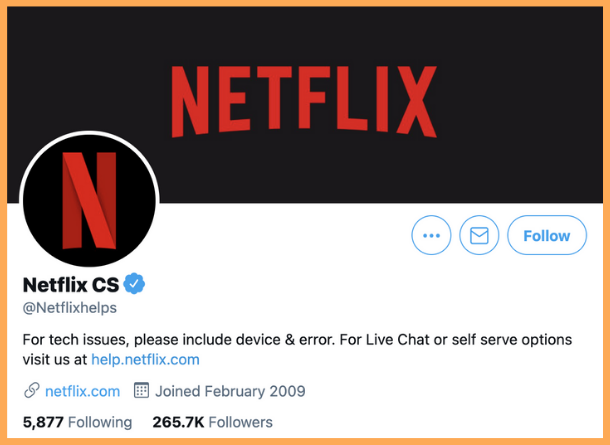
Editor’s note: This article was first published in April 2016 and has been updated for accuracy and relevance in May 2021.



